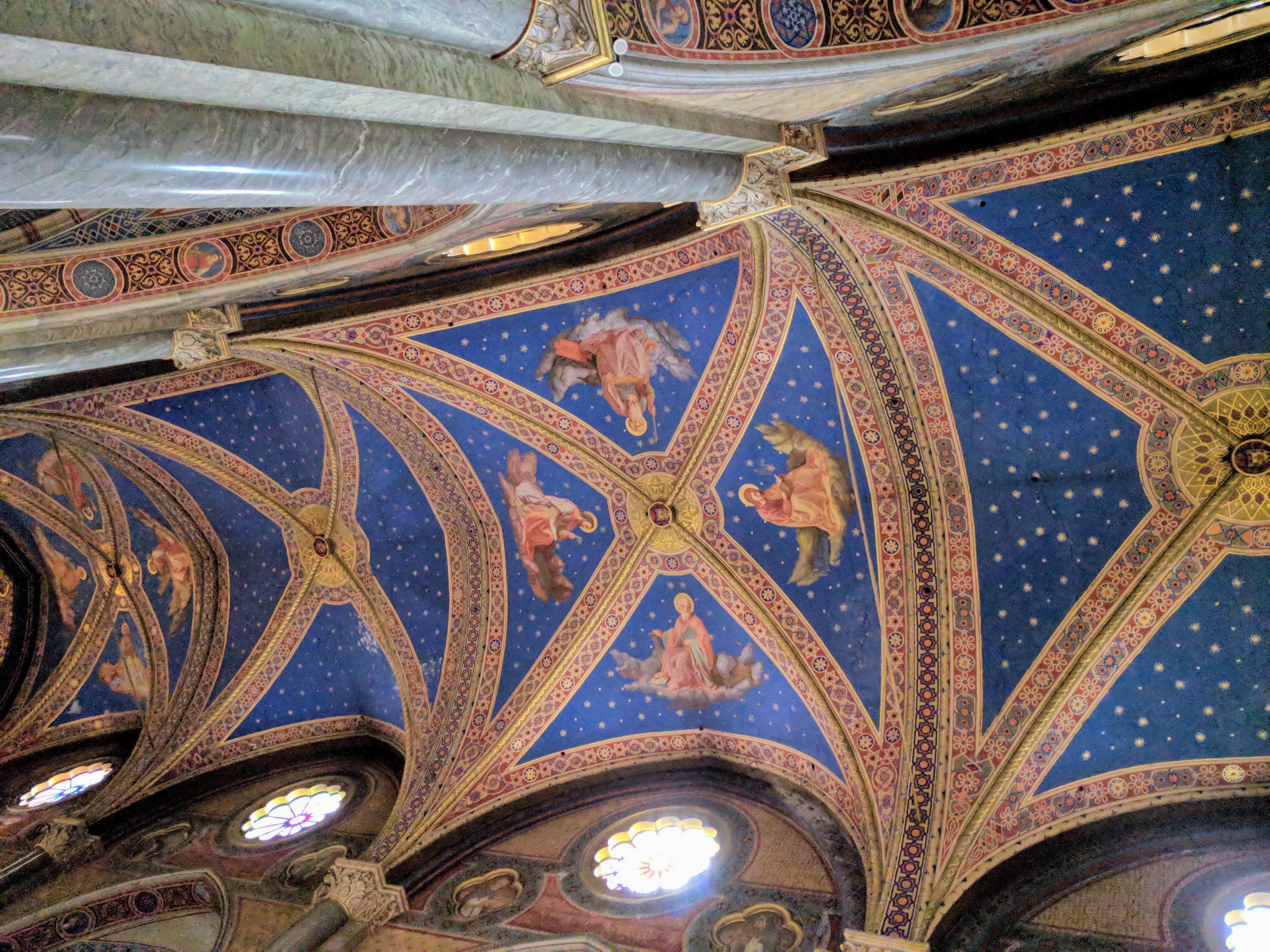Gesu and Sopra Minerva
Sat Dec 02, 2017 7:12 amOn our way to see the Pantheon, we swung by Teatro Marcello, Gesu Church, and Sopra Minerva.
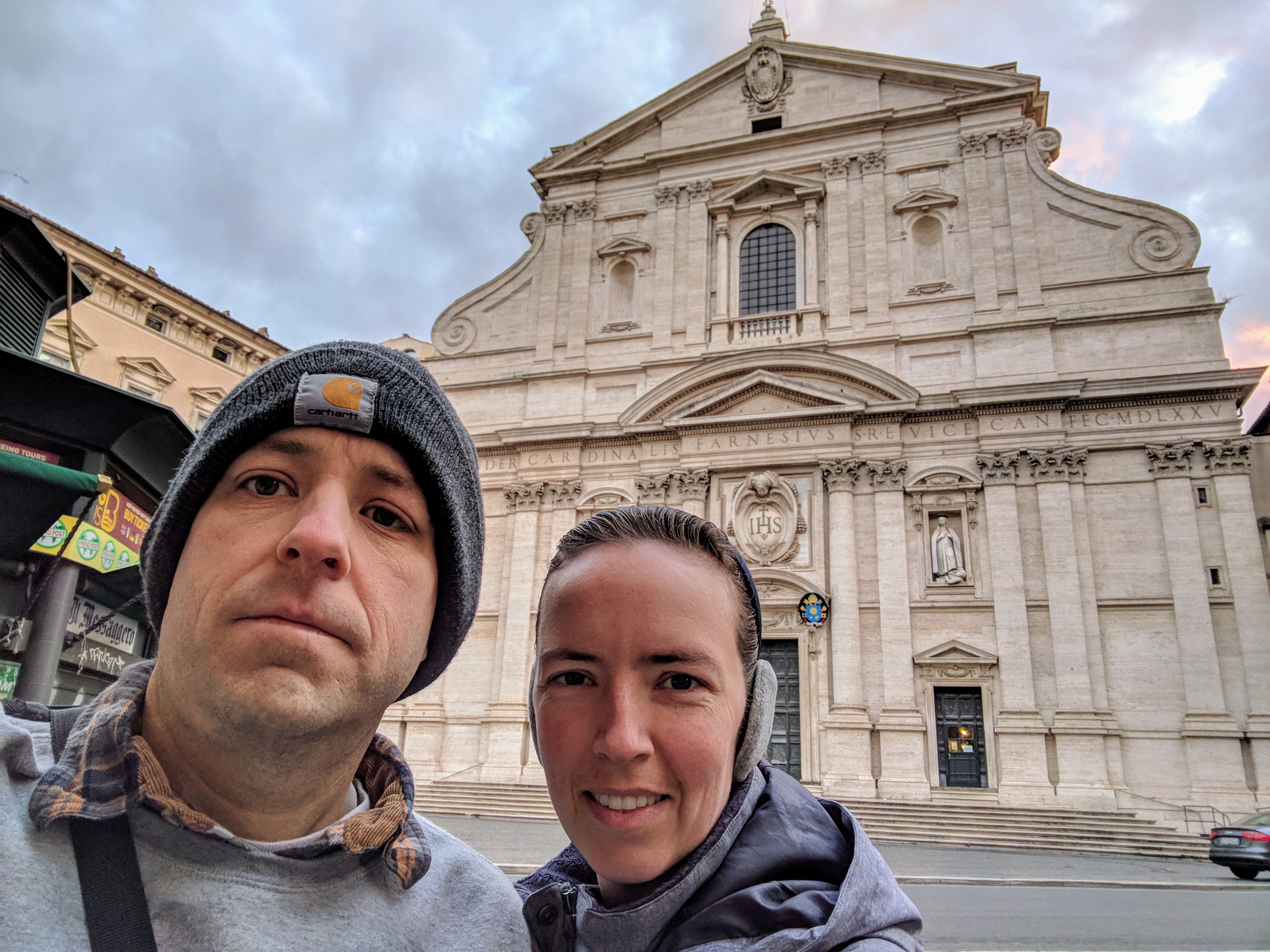
If Chiesa del Gesu has a familiar look to it, that is because this is the very first Jesuit Church. It will remind you of Jesuit Churches all over the Americas. It is late baroque, dating to the late 16th Century.
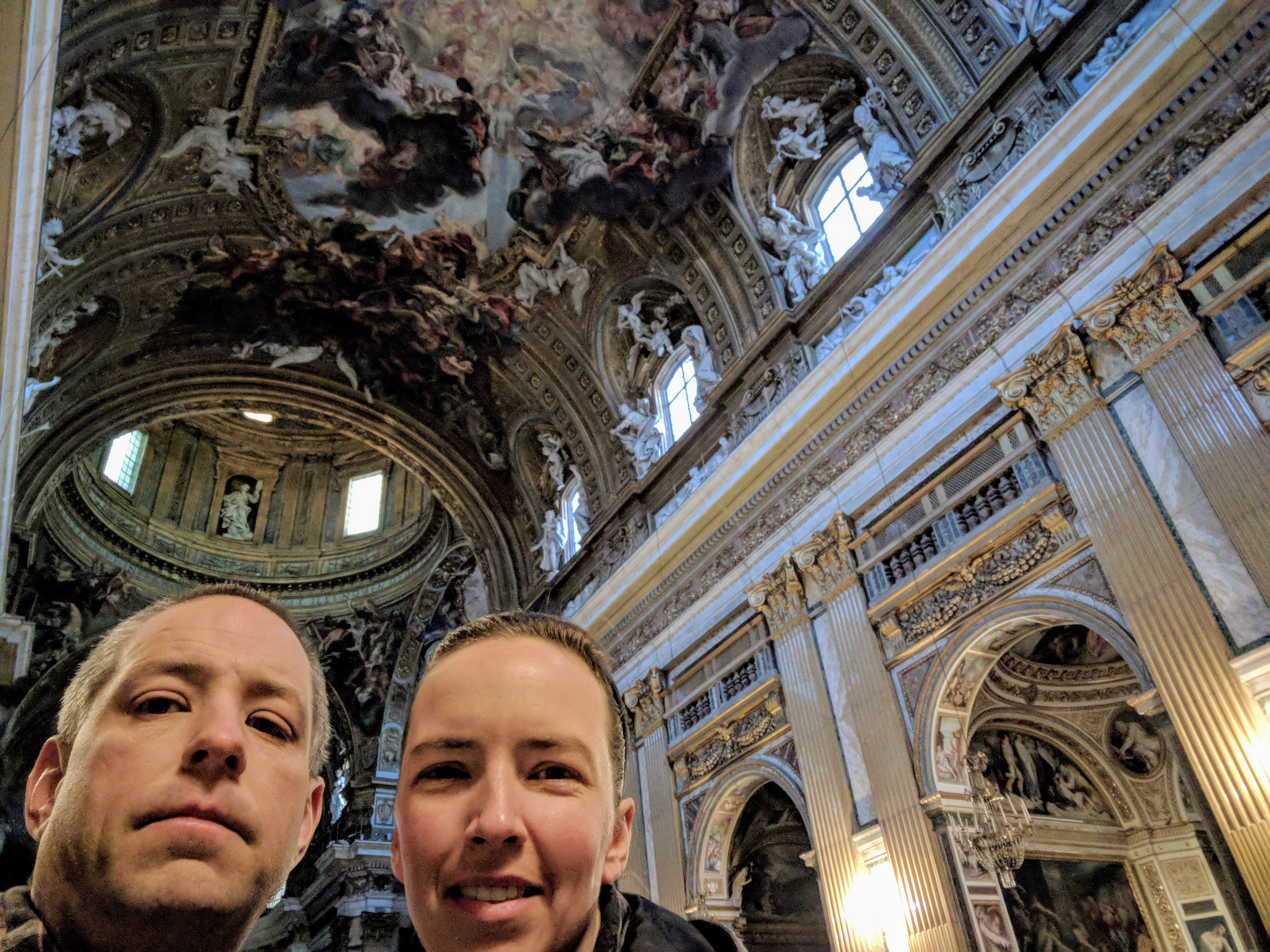
The interior really is a baroque fantasy. The highlight is the ceiling fresco Triumph of the Name of Jesus, which creates the illusion of a heavenly scene that soars high into the sky. Apparently the Jesuits are really into fantastic baroque illusions, because only a few blocks away in Sant’ Ignazio, the (untitled?) ceiling fresco by Andrea Pozzo, is perhaps even more stunning.
The artist Gaulli, was a student of and presumable worked under the direction of Bernini, who is more or less the first name in Baroque Rome.
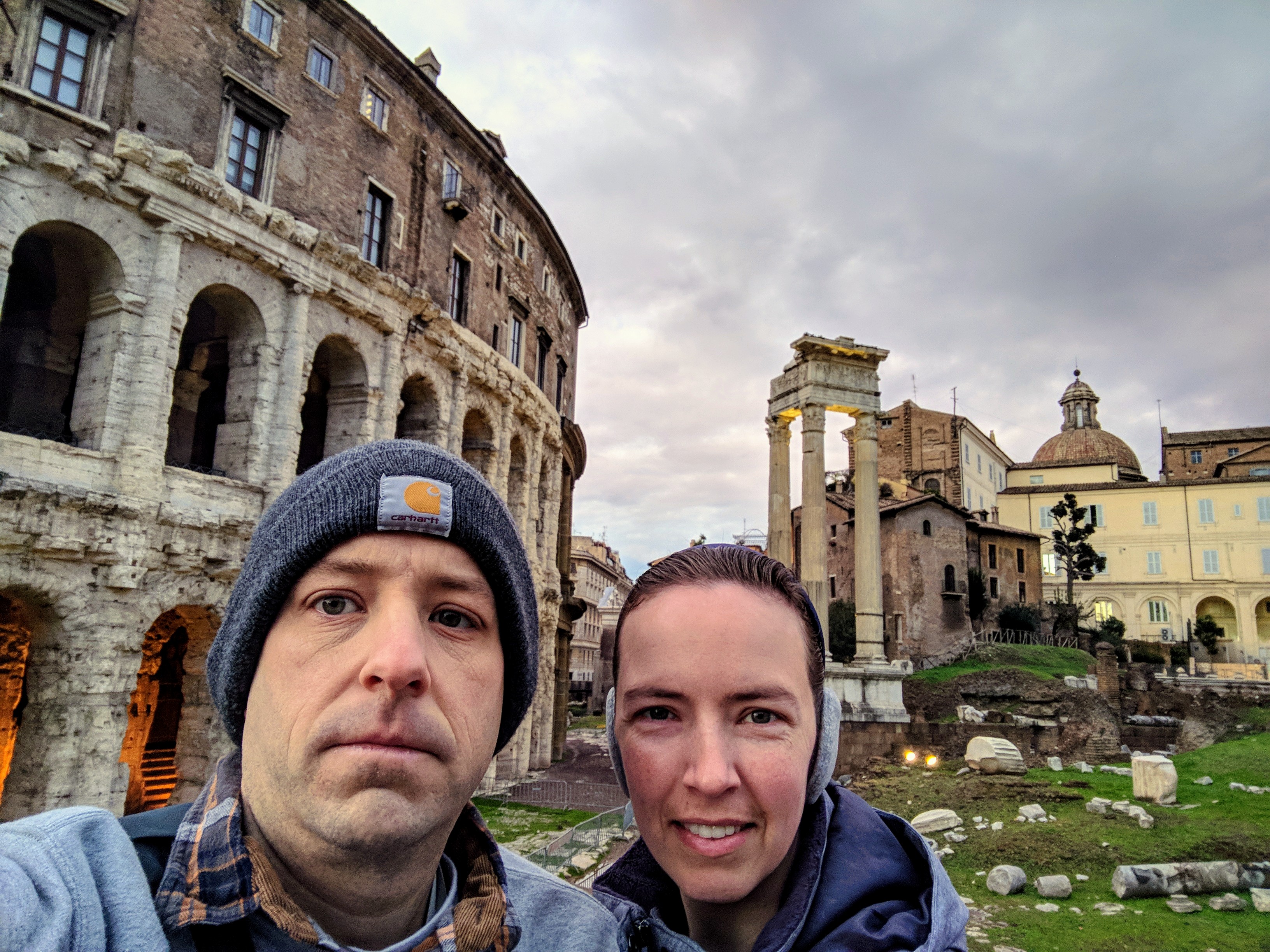
Before the Colosseum was built, there was the Theatre of Marcellus. Marcellus was the nephew of Emperor Augustus, who was by some definition the first Emperor of Rome.
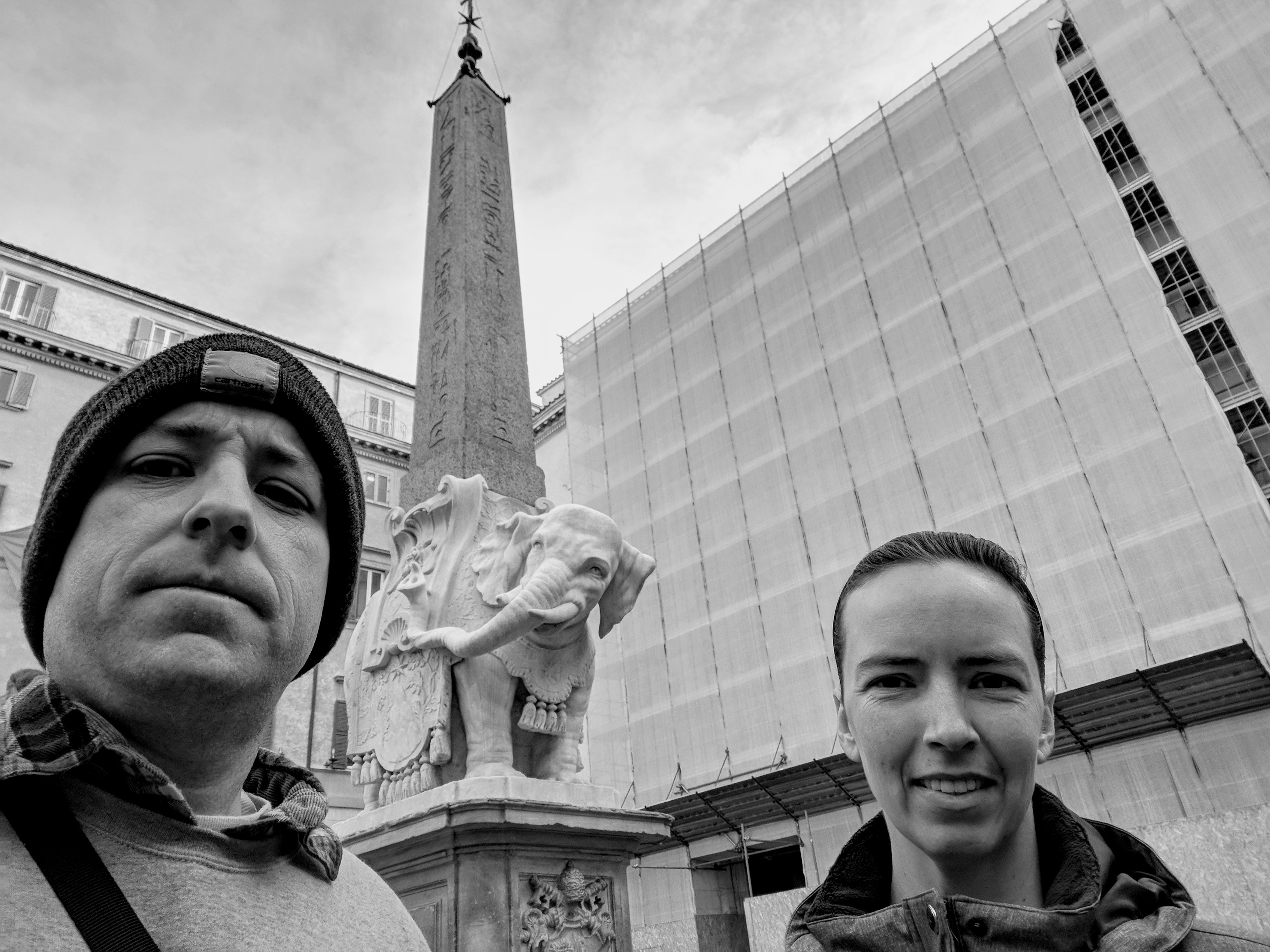
The origins of Elephant and Obelisk are speculative, but involve Bernini, who as we mentioned above was the first name in Baroque Rome. The obelisk may have come from a Temple of Isis, and the Elephant might have been carved by Bernini’s assistant Ercole Ferrata.
Piazza della Minerva is located next door to the Pantheon, and in front of Santa Maria sopra Minerva. (Sopra translates to above). The implication here is that below are the ruins of a Temple to Minerva, a Roman Goddess who in the Roman heirarchy of gods was second only to Jupiter, and thus quite important.
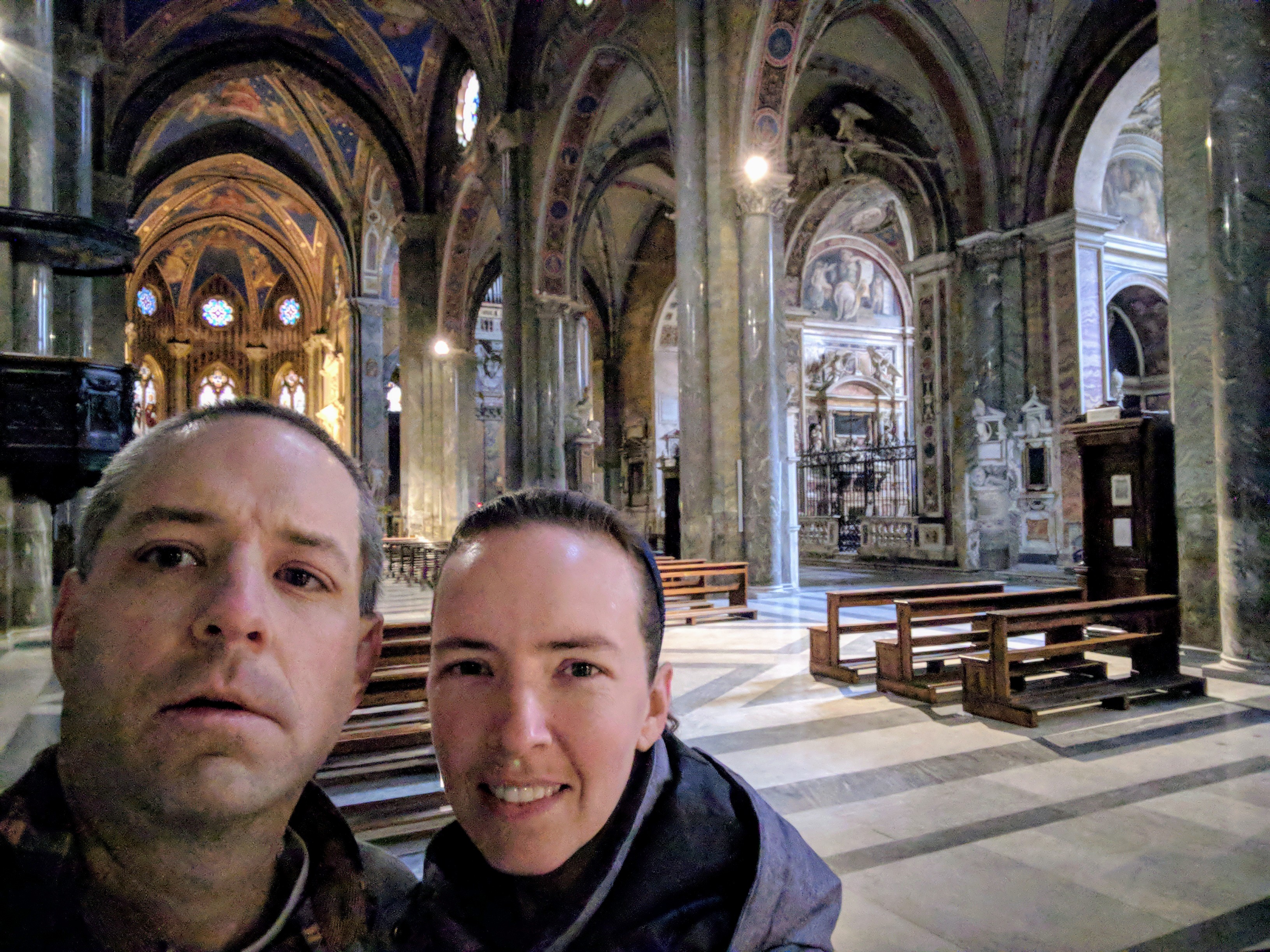
Santa Maria Sopra Minerva is the only Gothic Church in Rome.
The spacious interior and pointed arches are Gothic. That art on the ceiling is Gothic and quite pleasing.
